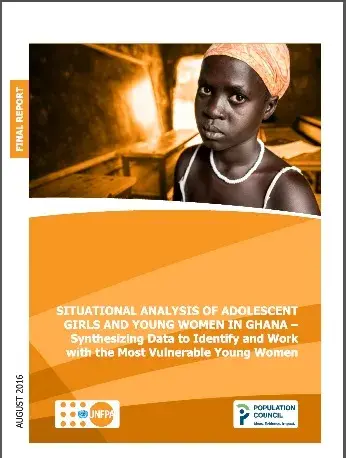Adolescents and young people are entitled to decent livelihoods; however, girls face disproportionate risks and distinctive consequences related to the vulnerabilities they experience. Young girls compared to their male counterparts are more likely to drop out of school, to marry at an early age, and to bear the consequences of poor sexual and reproductive health outcomes. Adolescent girls confront distinct physical and social vulnerabilities that threaten their human rights and livelihoods. The needs and opportunities for girls’ and boys’ diverge during early adolescence, with girls entering puberty on average two years earlier than boys. For many girls in the developing world, this marks the beginning of a protracted risk period during which they have little or no control over critical social, health, and economic outcomes. Girls are disproportionately vulnerable to violations of their human rights, inadequate reproductive health services, education and subjected to child marriage - all limiting realization of their full human potential. The recognition that adolescent girls and young women face a complex array of issues led the UNFPA Country Office (CO) to initiate an in-depth situational analysis of adolescent girls and young women in Ghana. The aim of the situational analysis was to identify and work to improve the sexual and reproductive health and rights (including gender-based violence and child marriage) vulnerabilities adolescent girls and young women face.
Who we are
SITUATIONAL ANALYSIS OF ADOLESCENT GIRLS AND YOUNG WOMEN IN GHANA - SYNTHESIZING DATA TO IDENTIFY AND WORK WITH THE MOST VULNERABLE YOUNG WOMEN

Publisher
Number of pages
159
Author
UNFPA GHANA and POPULATION COUNCIL
Publication
SITUATIONAL ANALYSIS OF ADOLESCENT GIRLS AND YOUNG WOMEN IN GHANA - SYNTHESIZING DATA TO IDENTIFY AND WORK WITH THE MOST VULNERABLE YOUNG WOMEN
Publication date
01 August 2016
Latest
News
20 November 2018


